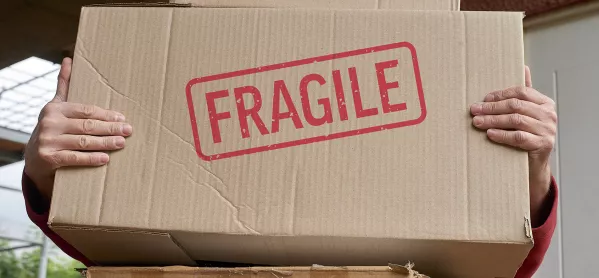New South Wales curriculum reform needs careful handling

New South Wales is well and truly on the path to curriculum reform, the first comprehensive change of its kind since the early 1990s.
With the consultation period for the last round of draft syllabus documents about to end, teachers scouring “what’s in” and “what’s out” would have noted the aim of the New South Wales Education Standards Authority (NESA) to “declutter” the curriculum while maintaining its knowledge-rich foundations.
For many teachers, this is a welcome change from the relentless “content churn” they’d grown accustomed to, which was identified by the Masters Review of 2020.
The priority of subject-specific writing has also been clearly identified, aligning approaches to the teaching of writing across subject areas. Where teachers may once have outsourced the development of writing skills to the English department, this is no longer possible.
The NESA has emphasised the importance of all teachers having the requisite content knowledge and skills for teaching effective writing from within their subject area.
This approach accords with a growing body of research highlighting the importance of background knowledge in being able to express and connect ideas, and thereby show depth of understanding.
NSW curriculum: what happens next?
Pedagogically, New South Wales public schools are also being asked to invest in explicit instruction.
At the start of term 2 this year, professional development began with the announcement from the NSW Department of Education that every classroom would be required to embed “modelled, guided and independent practice” to support individual student growth.
The department’s statement on explicit teaching in NSW public schools seeks to dispel a number of myths surrounding the approach, most notably that it is inflexible, requires teaching to a script, and ignores creativity and imagination.
Crucially, it points out that explicit instruction “does not preclude the use of other teaching strategies, but order and frequency are important”.
Recent media reports have highlighted the successes of Marsden Road Public School, Canley Vale High School, Cessnock High School and Balgowlah Boys High School in adopting explicit instruction. Long may the pedagogical claims of our educational authorities be tested and supported with real-world data on school improvement.
We simply cannot ignore findings such as those of the Centre for Education Statistics and Evaluation, that students receiving explicit instruction in Year 7 were, on average, four months ahead in their learning by Year 9. This was a comprehensive study of 16,000 NSW public schools.
Explicit enquiry versus deep enquiry
Nevertheless, NSW teachers have some genuine concerns about this new direction: isn’t deep enquiry the point of learning? Will we have to junk units of enquiry that we know to be effective? How much work does this represent for teachers who are already overstretched?
However, staffroom talk of “death by PowerPoint”, “industrial schooling” and “drill and kill” have mischaracterised explicit instruction as “the blind leading the blind” or “free-range chickens”, who have dismissed honest attempts by teachers to make learning more meaningful for their students.
The growing cacophony of social media opinion has been unhelpful in every practical sense. While these debates are far from new and reflect deep fissures between different educational schools of thought, social media has accentuated the binary positions.
Understanding alternative perspectives or seriously engaging with the strengths of their argument won’t win battles but it may reduce the need for them.
That’s not to say that all opinions are equally valid - it’s simply an acknowledgement that the two approaches may not be as mutually exclusive as the loudest voices would have us believe.
Nuance is lost in the shouting match
Where explicit instruction sees independent enquiry as the goal of learning, models of enquiry tend to present it as a preferred way of learning. Important questions for teachers to ask are: how can we best help our students become effective enquirers and when is it appropriate to use open enquiry?
Of course, this nuance is lost amid social media shouting matches. Sustained, evidence-informed professional development is essential in helping teachers to understand, and successfully implement, what’s being asked of them.
Legitimate questions about the nature of student enquiry and how to best support this cannot be ignored. However, we’d do well as teachers to remember what it was like to learn something new for the first time, and to cover content that was not of our choosing.
If it’s worth knowing, it’s worth explaining in increments, checking for individual understanding and responding to common misunderstandings. In that sense, explicit instruction may not be all that new.
David Van Tol is head of history at Kambala School, Sydney, and the author of several history textbooks written for the NSW curriculum
Looking for your next education role? You can browse hundreds of teaching jobs across Australia with Tes. Find the latest jobs
topics in this article



